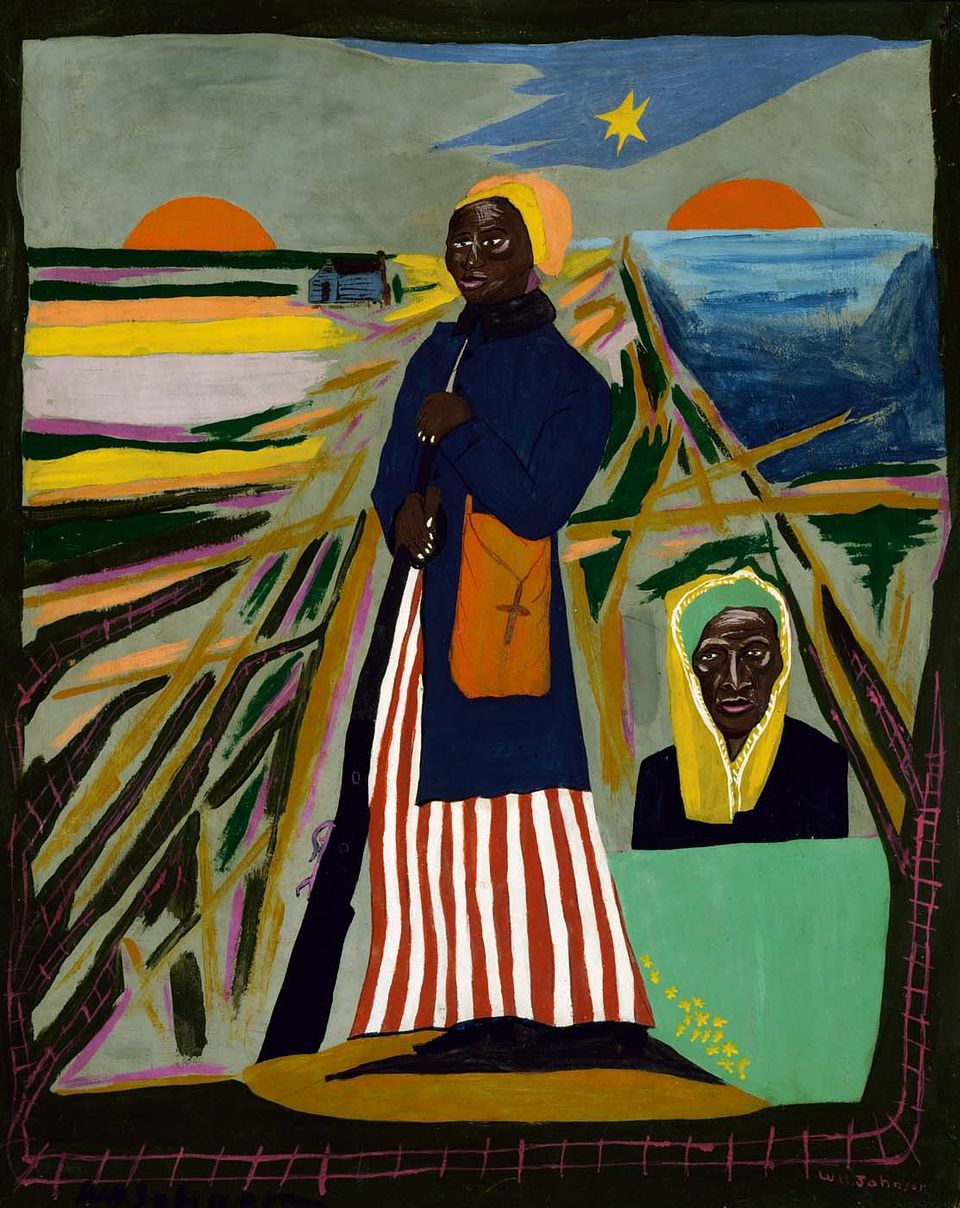Artwork Details
- Title
- Booker T. Washington Revelation
- Artist
- Date
- ca. 1945
- Location
- Not on view
- Dimensions
- 39 7⁄8 x 30 7⁄8 in. (101.3 x 78.4 cm)
- Credit Line
- Gift of the Harmon Foundation
- Mediums
- Mediums Description
- oil on fiberboard (Upson Board)
- Classifications
- Subjects
- Figure group
- Occupation — education
- African American
- History — United States — Black History
- Portrait male — Washington, Booker T.
- Object Number
- 1967.59.1143
Artwork Description
In June 1881, Booker T. Washington (1856--1915), an honors graduate of Hampton Institute (now Hampton University), was invited to establish a school for African Americans in Tuskegee, Alabama. When he arrived, he discovered there were no funds for buildings, so classes met in a dilapidated shanty lent by a church. Within months Washington had borrowed money, purchased a one-hundred-acre farm, and put students to work constructing buildings. By the time Washington died, Tuskegee Normal and Industrial Institute consisted of more than one hundred structures, fifteen hundred students, a faculty of nearly two hundred, academic and vocational courses in more than thirty-five fields of study, and an endowment of approximately $2 million.
Although Washington was an advisor to presidents and had powerful friends in American industry, Johnson chose to surround Washington with people and structures representing Tuskegee Institute's remarkable success. At the right, a plow, shovels, and other implements testify to Washington's belief in the importance of vocational education. Images of Science Hall, the Agricultural Building, the Chapel, and other structures reflect Washington's vision of a school where students could live and study in well-equipped surroundings. Johnson also featured portraits of John W. Washington, Robert R. Taylor, Warren Logan, Emmett Jay Scott, and Olivia Davidson, people who were instrumental to Tuskegee's growth and success.














